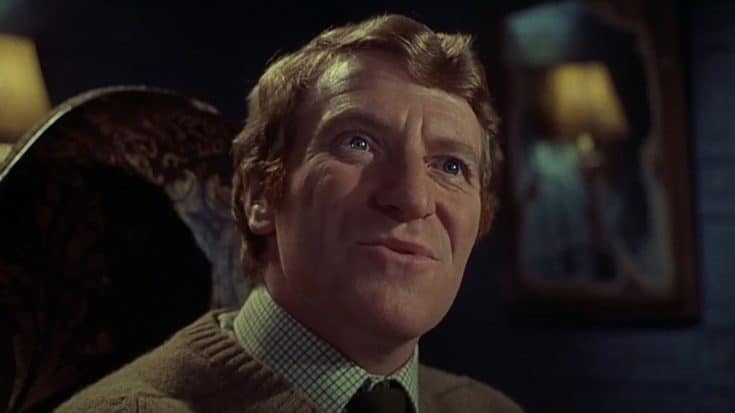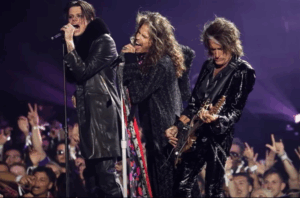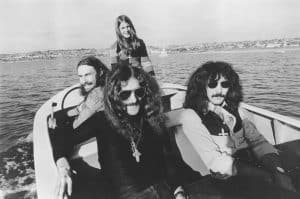10 1970s Horror Movies Everyone Forgot About

via ScreamFactoryTV ./ Youtube
The 1970s were a golden age for the genre, producing some of the most well-known horror films ever produced. Halloween, The Wicker Man, and The Exorcist were among the classics that terrified audiences and inspired countless follow-up franchises. From relentless slashers to spectral horrors, the decade has something to offer every horror fan.
But not all of the 1970s’ amazing horror movies were well-known. While Jaws and The Texas Chain Saw Massacre dominated pop culture, many other spine-tingling masterpieces went unnoticed. These lesser-known horror movies are nonetheless full of gore, a scary atmosphere, and heart-stopping horrors despite their lack of popularity. If you’re looking for undiscovered horror gems, you should definitely check out these underappreciated films from the 1970s.
Alice, Sweet Alice (1976)
Alice, Sweet Alice is a chilling movie that combines slasher excitement with psychological terror to keep viewers on edge. Alfred Sole’s 1976 thriller, originally titled Communion, is set in 1961 Paterson, New Jersey. Following the horrific murder of nine-year-old Karen during her First Communion, the story takes place. Alice, her problematic 12-year-old sister, is immediately suspected. The neighborhood is left wondering how dangerous this young girl might be as more horrific murders take place.
Despite having a very small budget of $350,000, Alice, Sweet Alice demonstrates that a scary movie doesn’t necessarily require elaborate special effects. A lingering sense of dread is created by the film’s spooky atmosphere and gripping narrative, which were inspired by Alfred Hitchcock’s Psycho. This underappreciated horror picture, which stars Linda Miller, Mildred Clinton, and a teenage Brooke Shields in her feature debut, offers a startling examination of innocence, guilt, and the darkness that lies inside.
The Sentinel (1977)
What if your new house was a portal to Hell rather than merely an ancient and eerie place? That is the horrifying idea of Michael Winner’s 1977 horror movie, The Sentinel. The narrative centers on Alison Parker (Cristina Raines), a lady who moves into an apparently ideal Brooklyn apartment but is plagued by childhood trauma. However, when she learns unsettling facts about her building and its unsettling occupants, her new beginning swiftly becomes a nightmare.
The Sentinel has terrifying, otherworldly moments and spooky images, but what really sets it apart is the outstanding performances. The picture has a strong supporting cast, and Raines gives dimension to Alison’s collapsing mental state. Another further level of interest is added by early cameos by Beverly D’Angelo, Jeff Goldblum, and Christopher Walken. For horror enthusiasts who enjoy a slow-burning mystery with unexpected turns, The Sentinel is an essential watch. It is tense and unnerving.
The Legend Of Hell House (1973)
One of the most iconic horror clichés is a haunted house, and The Legend of Hell House (1973) provides one of the most horrifying takes on the theme. In this unsettling thriller, a group of detectives spend the night at a house that was formerly occupied by a ruthless killer. They wanted to know the truth about the house’s disturbing history. As eerie incidents get more intense, though, it becomes clear that some malevolent abilities cannot be explained or prevented.
John Hough directed the tense film, which depends more on atmospheric tension than corny scares. The tiny but talented cast, which includes Pamela Franklin and Roddy McDowall, makes the fate of each character feel very personal. Even while haunted house films are nothing new, The Legend of Hell House is notable for its eerie cinematography, disturbing energy, and psychological horror. Everyone who likes spooky thrills should see it, despite the fact that it’s not as well-known as some.
Martin (1977)
Although he is most recognized for having revolutionized zombie movies, George A. Romero takes a totally different—and as unsettling—approach to horror in Martin (1977). Martin (John Amplas), a disturbed young man who is adamant that he is a vampire, is the focus of this psychological thriller. Martin, however, is not immortal or armed like the legendary beings of legend. Instead, believing it’s only in his nature, he turns to gruesomely real and violent means to quench his bloodlust.
Romero’s provocative storyline is what distinguishes Martin from other vampire films. Rather than relying on gothic fantasy, the movie blurs the boundaries between psychological drama and horror, leaving viewers to wonder if Martin is actually a monster or just seriously ill. Martin is one of the most unique and eerie vampire movies of the 1970s because of its unexpected conclusion, which stays with you long after the credits have rolled.
Let’s Scare Jessica To Death (1971)
While other horror movies use gore or creatures to frighten viewers, Let’s Scare Jessica to Death (1971) uses uncertainty, which is arguably more unnerving. This unsettling psychological horror, which was directed by John Hancock, centers on Jessica, a vulnerable lady in the process of recovery from mental illness, as she starts to have unusual, potentially otherworldly experiences. The distinction between truth and hallucination becomes increasingly hazy as her paranoia increases, leaving Jessica and the viewer uncertain about what to trust.
The film’s capacity to confuse audiences as much as its protagonist is what makes it so powerful. Even in the scariest scenes, the majority of horror films offer some degree of confidence. That is taken away in Let’s Scare Jessica to Death, which leaves a sense of uncertainty that persists long beyond the last scene. This picture is a hidden gem that unnerves in a manner that few horror films can, thanks to its eerie atmosphere and psychological depth.
The Vault Of Horror (1973)
While Tales from the Crypt may be familiar to horror lovers, The Vault of Horror, its 1973 sequel, is still regarded as an underappreciated masterpiece. The five terrifying stories in this anthology film, which was directed by Roy Ward Baker, revolve around the personal nightmares of the five men who are stranded in an enigmatic underground lair. Although it has the same unsettling storytelling approach as its predecessor, you don’t need to have seen it before to appreciate its spine-tingling turns.
The Vault of Horror combines surreal thrills with disturbing moral lessons, making it ideal for fans of short-form horror or The Twilight Zone. It is a must-watch for horror fans of all stripes since each episode, from vampires to cursed paintings, provides something distinctly horrific. Because of its variety, everyone will have a scare, demonstrating that sometimes the most terrifying nightmares are mild.
Long Weekend (1978)
Horror films frequently deal with the subject of revenge, but Long Weekend adopts a novel strategy by making nature the target of retaliation. This 1978 Australian thriller, which was directed by Colin Eggleston, centers on a toxic couple who carelessly ruin the environment while camping, only to have the forest retaliate in horrifying ways.
In contrast to conventional horror antagonists, the “antagonist” in this film is nature, which transforms the movie into an engrossing warning. Long Weekend sends a strong message about the environment, warning that misuse would not go unpunished. By deftly manipulating the audience’s empathy, the movie makes the human characters more hateful than the invisible power that is torturing them. It is a genuinely unique entry in the genre because of its spooky atmosphere and slow-burning tension, demonstrating that often, the most frightening thing isn’t a monster but rather the world around us retaliating.
Black Christmas (1974)
Black Christmas established the norm even before horror films with a Christmas theme gained popularity. This 1974 Canadian slasher, which was directed by Bob Clark, takes place within a sorority home and swiftly transforms the festive spirit into fear. Unaware that the murderer has been in the house the entire time, the girls begin to vanish, but the true horror comes when the nightmare starts with unsettling prank calls.
Black Christmas is an entirely tense film from beginning to end, in contrast to your average feel-good Christmas movie. The viewer is aware from the start that there is danger inside the house, which creates an intolerable sense of suspense and is what makes it so terrifying. Not only is it a holiday horror classic, but it also helped create the slasher genre, opening the door for movies like Scream and Halloween. Black Christmas is the ideal festive stunner if you’re searching for a Christmas film that makes you laugh more than it makes you smile.
The Creeping Flesh (1973)
The Creeping Flesh is a Victorian-era horror film that combines gothic elements with a sinister scientific undertone. A scientist discovers an ancient skeleton in this 1973 British thriller, only to discover that it contains a dark secret. Water causes the bones to start growing new flesh, which gives life to something genuinely malevolent. A disastrous thunderstorm and ill-advised experiments swiftly turn what begins as a revolutionary discovery into a terrifying nightmare.
A powerful performance by Christopher Lee heightens the spooky mood of the movie. In contrast to many other supernatural horror movies, The Creeping Flesh adopts a pseudo-scientific stance, trying to explain its horrifying phenomena instead of merely portraying them as works of pure fiction. This only heightens the sense of dread since the resurrected creature turns into an unrelenting force of bad luck. For fans of vintage horror, this overlooked gem is a must-watch because of its original concept and timeless gothic aspects.
Tourist Trap (1979)
There were a lot of daring and strange horror movies in the 1970s, and Tourist Trap is a great illustration of the perverse inventiveness of that time. The plot of this 1979 slasher, which was directed by David Schmoeller, is a group of teenage friends who become stuck after their automobile breaks down, but it soon devolves into a terrifying terrain. They are haunted by mannequins and other lifeless items, all of which are hauntingly manipulated by a psychokinetic lunatic rather than the usual masked killer.
Even though Tourist Trap isn’t the most well-known horror movie of its day, it’s a really eerie experience. A deranged villain, defenseless victims, and a remote location are all hallmarks of traditional horror, but it also has a bizarre, supernatural twist. The end effect is a movie that is both recognizable and utterly surprising. You will be thinking about Tourist Trap long after the credits have rolled because of its gloomy mood and frightening imagery.






















